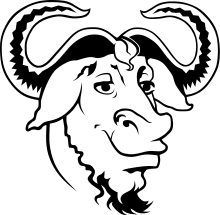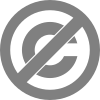Copyright on a free Wiki
Failure to adhere exactly according to policy can and will result in a block. Pay attention.
Wikipedia is as the slogan says, "The Free Encyclopedia". Unfortunately, this causes some problems when we use other materials that aren't so free, and other problems when we'd like to do something but really can't. Most of Wikipedia's text and many of its images are co-licensed under the Creative Commons Attribution-Sharealike 3.0 Unported License (CC-BY-SA)

and the GNU Free Documentation License (GFDL)

These are copyleft licenses that allows for the free distribution of content under certain conditions. The main terms of this license are as follows:
- Anything licensed under these must display a copy of the license (Wikipedia's is at the link I just gave you).
- Any "derivative works", or works based on something licensed under the CC-BY-SA and GFDL, must be licensed under CC-BY-SA and GFDL.
- Content licensed under the CC-BY-SA and GFDL may be modified, but must include a history of all changes and who made them when.
- All content licensed under the CC-BY-SA and GFDL must be freely available or available under "fair use".
There are other terms to the license, but those are the most important for what is done on Wikipedia. Wikipedia displays a copy of the license, which is fully protected under the authority of the Wikimedia office. Whenever we make an edit, that edit is logged in the page's edit history, as well as your contributions. When a page is deleted, contributions to that page are hidden, but are still visible to administrators or "sysops". Certain page revisions may also be hidden from public view in the event of extreme circumstances, but are still visible to those with the authority to remove them for CC-BY-SA and GFDL compliance.
Unfortunately, these licenses does have some limit on what we can do. When merging pages, we cannot delete the page that is now empty, even if it serves little useful purpose even as a redirect. The contributions to that page, which provided the information that was merged out, must be kept logged so that people know where it came from and what changes were made when.

Problems such as those, however, are rare, as the Mediawiki software is designed to be GFDL compatible. (As a side note, the software itself is available under a similar license, the GPL.) The most common issue, and the one that most frequently results in blocks, is copyright. Any registered user can upload an image or media file. You've done this yourself, with your logo on your userpage. If they created the image, as you did yours, they can license it under a free license such as the GFDL or a Creative Commons license, or release it into the public domain (Although if you use any of those options, it's recommended to upload the image to the Wikimedia Commons instead so any language Wiki can use it.)

Problems arise when people upload images that are not their own. Most images are under some form of copyright, even if it's not explicitly stated anywhere. This is usually the case with anything found on the internet. When these images are uploaded, Wikipedia must adhere to a very strict policy known as "fair use". What this basically is doing is giving us a reason to use an otherwise non-free image, on the basis that it is for educational purposes, using it has no measurable effect on the copyright holder's rights, and that we have no other alternative. The establishment of this reason is called the fair use rationale, part of a set of criteria that MUST accompany any fair use/copyright tag on Wikipedia. These criteria are:
- A specific fair use tag (see link above) that describes what the image is.
- The source of the image (this is usually a website, but could also be a book or magazine that you scanned the picture out of)
- The image itself must be of low resolution. If it is high resolution, that version must be deleted and replaced with another (essentially, worse) version.
- A fair use rationale explaining:
- Where the image is to be used (This page MUST be in the main (article) namespace. Fair use images MUST NOT be used anywhere else)
- That the image cannot be used to replace any marketing role or otherwise infringe upon the owner's commercial rights to the image
- How the image is being used, in a way that fits within the fair use policy (i.e., identification purposes, etc.)
- That there is no way the image can possibly be replaced with a free version
- The image must have been previously published elsewhere
Only when an image meets all of these criteria may it be used. Fair use images must be used in at least one article (not "orphaned"), and articles using fair use images must use as few of them as possible. Any image that does not meet these criteria to the letter will be deleted. Any user that repeatedly uploads images not meeting these criteria to the letter will be blocked.
As a further note, I mentioned that fair use images must not be able to be replaced by a free alternative. What this basically means is, there is no way you, me, or anyone else could go out and take a picture of this same thing and release it under a free license. For example:
- I could upload a picture of George W. Bush from the White House. Normally government works are automatically public domain, but let's say for the purpose of this discussion that the White House holds the copyright to that particular picture of the President. I can claim fair use, but the claim would be invalid because you could just as easily go to a speech Bush is giving and take a picture of him yourself. (That's what happened here) This is considered replaceable fair use and so would be deleted.
- Person X could upload a picture of the Empire State Building from a marketing kit they distributed. This image would likely be copyrighted, and so they claim fair use. But I happen to have been to New York and have a picture of the ESB. I upload that instead and release it into the public domain. The first, copyrighted picture, is also replaceable.
- For the article on the Monterey Bay Aquarium, I want to upload an image of their logo (visible in no great detail here). I go to their website and upload their version. This fair use is allowable, because no matter where or how they display their logo, it'll be under the same copyright. Since the simple art of scanning or taking a picture of a piece of work is not enough to justify my ownership of the rights to the image, there is no way to obtain a free version of the logo.
For a full description of the policies and guidelines concerning fair use, you should read the page at WP:FU.
Tasks
After reading all of this, write a really brief paragraph on my talk page about what you learned from this lesson. There are no right or wrong answers, I just want to learn what your understanding is.